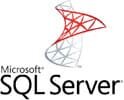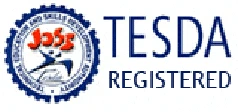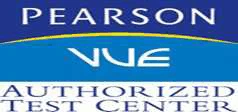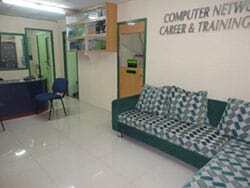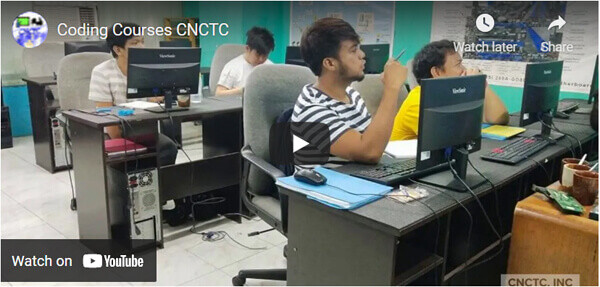
Key Features – Live Online
- 4 days Instructor-Led Live Online Classroom
- Webex Virtual Class for interactive near classroom experience
- Access to Remote Lab PC for Hands-On activities
- Unlimited Practice exams
- Integrated Courseware in the Learning Management System
- Step by Step guide for challenging hands-on lab activities
- Flexible Schedules – Both Weekdays and Weekends Classes
- Get Trained by Querying Microsoft SQL Expert Trainer with Over 15 Years of Industry Experience
- No. 1 Training Center for Querying Microsoft SQL Courses
- E-learning Access for Pre-course and Post Training Support
- Best Price Guaranteed for Querying Microsoft SQL Courses
Key Features – Face to Face
- 4 days Instructor-Led Face to Face Classroom training
- We are a TESDA Registered Training Center
- Offering Flexible Schedules – Both Weekdays and Weekends Classes
- Get Trained by Querying Microsoft SQL Expert Instructor with Over 15 Years of Industry Experience
- No. 1 Training Center for Querying Microsoft SQL Courses
- We Guarantee Best Price for Querying Microsoft SQL Courses
Key Features 1 on 1
- Gain the technical skills needed in the workplace. 1 on 1 training is the best way to learn
- Quickest way to master any of our course offerings.
- Experience superb hands-on laboratory activities and unobstructed attention from your trainer.
- Guaranteed to start the Training
TRAINEE FEEDBACKS
About the Course:
This instructor-led course provides students with the technical skills required to write basic Transact-SQL queries for Microsoft SQL Server. It is the foundation of all SQL Server disciplines: Database Administration, Database Development, and Business Intelligence.
Audience Profile:
This course is intended for Database Administrators, Developers, and Business Intelligence professionals. It will very likely be well attended by SQL power users who aren’t necessarily database–focused or plan on taking exams, namely, report writers, business analysts, and client application developers.
At Course Completion:
- After completing the course, students will be able to:
- Describe the basic architecture and concepts of Microsoft SQL Server.
- Understand the similarities and differences between Transact-SQL and other computer languages.
- Write SELECT queries
- Query multiple tables
- Sort and filter data
- Describe the use of data types in SQL Server
- Modify data using Transact-SQL
- Use built-in functions
- Group and aggregate data
- Use subqueries
- Use table expressions
- Use set operators
- Use window ranking, offset and aggregate functions
- Implement pivoting and grouping sets
- Execute stored procedures
- Program with T-SQL
- Implement error handling
- Implement transactions
Prerequisites:
- This course requires that you meet the following prerequisites:
- Working knowledge of relational databases
- Basic knowledge of the Microsoft Windows operating system and its core functionality.
EMPLOYMENT OBJECTIVES
Upon completion of the course, trainees will be qualified to be a database administrator, database developer or database architect
Querying Microsoft SQL Server Syllabus
Module 1 Introduction to Microsoft SQL Server
This module introduces the SQL Server platform and major tools. It discusses editions, versions, tools used to query, documentation resources, and the logical structure of databases.
Lessons
• The Basic Architecture of SQL Server SQL Server Editions and Versions
• Getting Started with SQL Server Management Studio
Module 2 Introduction to T-SQL Querying
This module introduces Transact SQL as the primary querying language of SQL Server. It discusses the basic structure of T-SQL queries, the logical flow of a SELECT statement, and introduces concepts such as predicates and set-based operations.
Lessons
• Introducing T-SQL
• Understanding Sets
• Understanding Predicate Logic
• Understanding the Logical Order of Operations in SELECT statements
Laboratory
• Executing Basic SELECT Statements
• Executing queries which filter data using predicates
• Executing queries which sort data using ORDER BY
After completing this module, you will be able to:
o Describe the elements of T-SQL and their role in writing queries
• Describe the use of sets in SQL Server
o Describe the use of predicate logic in SQL Server
o Describe the logical order of operations in SELECT statements
Module 3 Writing SELECT Queries
This module introduces the fundamentals of the SELECT statement, focusing on queries
against a single table.
Lessons
• Writing Simple SELECT Statements
• Eliminating Duplicates with DISTINCT
• Using Column and Table Aliases
• Writing Simple CASE Expressions
Laboratory
• Write simple SELECT Statements
• Eliminate Duplicates Using Distinct
• Use Table and Column Aliases
• Use a Simple CASE Expression
After completing this module, you will be able to:
o Write simple SELECT statements.
o Eliminate duplicates using the DISTINCT clause.
o Use column and table aliases.
o Write simple CASE expressions.
Module 4 Querying Multiple Tables
This module explains how to write queries which combine data from multiple sources in
SQL Server. The module introduces the use of JOINs in T-SQL queries as a mechanism for retrieving data from multiple tables.
Lessons
• Understanding Joins
• Querying with Inner Joins
• Querying with Outer Joins
• Querying with Cross Joins and Self Joins
Laboratory
• Writing Queries That Use Inner Joins
• Writing Queries That Use Multiple-Table Inner Join
• Writing Queries That Use Self Joins
• Writing Queries That Use Cross Joins
After completing this module, you will be able to:
o Describe how multiple tables may be queried in a SELECT statement using joins.
o Write queries that use inner joins.
o Write queries that use outer joins.
o Write queries that use self-joins and cross joins.
Module 5 Sorting and Filtering Data
This module explains how to enhance queries to limit the rows they return, and to control the order in which the rows are displayed. The module also discusses how to resolve missing and unknown results.
Lessons
• Sorting Data
• Filtering Data with a WHERE Clause
• Filtering with the TOP and OFFSET-FETCH Options
• Working with Unknown and Missing Values
Laboratory
• Writing Queries That Filter Data Using a WHERE Clause
• Writing Queries That Filter Data Using an ORDER BY Clause
• Writing Queries That Filter Data Using the TOP Option
• Writing Queries That Filter Data Using the OFFSET-FETCH Clause
After completing this module, you will be able to:
o Filter data with predicates in the WHERE clause.
o Sort data using ORDER BY.
o Filter data in the SELECT clause with TOP.
o Filter data with OFFSET and FETCH.
Module 6 Working with SQL Server 2008 Data Types
This module explains the data types SQL Server uses to store data. It introduces the many types of numeric and special-use data types. It also explains conversions between data types and the importance of type precedence.
Lessons
• Introducing SQL Server 2014 Data Types
• Working with Character Data
• Working with Date and Time Data
Laboratory
• Writing Queries That Return Date and Time Data
• Writing Queries That Use Date and Time Functions
• Writing Queries That Return Character Data
• Writing Queries That Use Character Functions
After completing this module, you will be able to:
o Describe numeric data types, type precedence and type conversions.
o Write queries using character data types.
o Write queries using date and time data types.
Module 7 Using DML to Modify Data
This module describes the use of Transact-SQL Data Manipulation Language to perform inserts, updates, and deletes your data.
Lessons
• Inserting Data
• Modifying and Deleting Data
Laboratory
• Inserting Data
• Updating and Deleting Data
After completing this module, you will be able to:
o Insert new data into your tables.
o Update and delete existing records in your tables.
Module 8 Using Built-In Functions
This module introduces the use of functions that are built into SQL Server Denali, and will discuss some common usages including data type conversion, testing for logical results and null ability.
Lessons
• Writing Queries with Built-In Functions Using Conversion Functions
• Using Logical Functions
• Using Functions to Work with NULL
Laboratory
• Write queries which use conversion functions
• Write queries which use logical functions
• Write queries which test for null ability
After completing this module, you will be able to:
o Write queries with built-in scalar functions. • Use conversion functions.
o Use logical functions.
o Use functions that work with NULL.
Module 9 Grouping and Aggregating Data
This module introduces methods for grouping data within a query, aggregating the grouped data and filtering groups with HAVING. The module is designed to help the student grasp why a SELECT clause has restrictions placed upon column naming in the GROUP BY clause as well as which columns may be listed in the SELECT clause.
Lessons
• Using Aggregate Functions Using the GROUP BY Clause
• Filtering Groups with HAVING
Laboratory
• Write queries which use the GROUP BY clause Write queries which use aggregate functions
• Write queries which use distinct aggregate functions
• Write queries which filter groups with the HAVING clause
After completing this module, you will be able to:
o Write queries that summarize data using built-in aggregate functions. • Use the GROUP BY clause to arrange rows into groups.
o Use the HAVING clause to filter out groups based on a search condition.
Module 10 Using Subqueries
This module will introduce the use of subqueries in various parts of a SELECT statement. It will include the use of scalar and multi-result subqueries, and the use of the IN and EXISTS operators.
Lessons
• Writing Self-Contained Subqueries
• Writing Correlated Subqueries
• Using the EXISTS Predicate with Subqueries
Laboratory
• Write queries which use self-contained subqueries
• Write queries which use scalar and multi-result subqueries
• Write queries which use correlated subqueries and EXISTS predicate
After completing this module, you will be able to:
o Describe the uses of queries that are nested within other queries.
o Write self-contained subqueries that return scalar or multi-valued results.
o Write correlated subqueries that return scalar or multi-valued results.
o Use the EXISTS predicate to efficiently check for the existence of rows in a subquery.
Module 11 Using Table Expressions
This module introduces T-SQL expressions which return a valid relational table, typically for further use in the query. The module discusses views, derived tables, common table expressions and inline table-valued functions.
Lessons
• Using Derived Tables
• Using Common Table Expressions
• Using Views
• Using Inline Table-Valued Functions
Laboratory
• Write Queries Which Use Views
• Write Queries Which Use Derived Tables
• Write Queries Which Use Common Table Expressions
• Write Queries Which Use Inline Table-Valued Functions
After completing this module, you will be able to:
o Write queries which use derived tables.
o Write queries which use common table expressions.
o Create simple views and write queries against them.
o Create simple inline table-valued functions and write queries against them.
Module 12 Using Set Operators
This module introduces Microsoft SharePoint Server as a platform for BI, and then focuses on building BI dashboards and scorecards with PerformancePoint Services.
Lessons
• Writing Queries with the UNION Operator
• Using EXCEPT and INTERSECT
• Using APPLY
Laboratory
• Write queries which use UNION set operators and UNION ALL multi-set operators
• Write queries which use CROSS APPLY and OUTER APPLY operators
• Write queries which use EXCEPT and INTERSECT operators
After completing this module, you will be able to:
o Write queries which combine data using the UNION operator
o Write queries which compare sets using the INTERSECT and EXCEPT operators
o Write queries which manipulate rows in a table by using APPLY with the results of a derived table or function
Module 13 Using Window Ranking, Offset, and Aggregate Functions
This module introduces window functions including ranking, aggregate and offset functions. Much of this functionality is new to SQL Server 2012. It will cover the use of T-SQL functions such as ROW_NUMBER, RANK, DENSE_RANK, NTILE, LAG, LEAD, FIRST_VALUE and LAST_VALUE to perform calculations against a set, or window, of rows.
Lessons
• Creating Windows with OVER
• Exploring Window Functions
Laboratory
• Write queries which use ranking functions
• Write queries which use offset functions
• Write queries which use window aggregate functions
After completing this module, you will be able to:
o Describe the benefits of using window functions.
o Restrict window functions to rows defined in an OVER clause, including partitions and frames.
o Write queries that use window functions to operate on a window of rows and return ranking, aggregation, and offset comparison results.
Module 14 Pivoting and Grouping Sets
This module discusses techniques for pivoting data in T-SQL as well to introduce the fundamentals of the GROUPING SETS clause. It will also cover the use of GROUP BY ROLLUP and GROUP BY CUBE syntax in SQL Server.
Lessons
• Writing Queries with PIVOT and UNPIVOT
• Working with Grouping Sets
Laboratory
• Write queries which use the PIVOT operator
• Write queries which use the UNPIVOT operator
• Write queries which use the GROUPING SETS subclause
After completing this module, you will be able to:
o Write queries which pivot and unpivot result sets.
o Write queries that specify multiple groupings with grouping sets.
Module 15 Executing Stored Procedures
This module introduces the use of existing stored procedures in a T-SQL querying environment. It discusses the use of EXECUTE, how to pass input and output parameters to a procedure, and how to invoke system stored procedures.
Lessons
• Querying Data with Stored Procedures
• Passing Parameters to Stored Procedures
• Creating Simple Stored Procedures
• Working with Dynamic SQL
Laboratory
• Use the EXECUTE statement to invoke stored procedures
• Pass parameters to stored procedures
• Execute system stored procedures
After completing this module, you will be able to:
o Return results by executing stored procedures.
o Pass parameters to procedures.
o Create simple stored procedures that encapsulate a SELECT statement.
o Construct and execute dynamic SQL with EXEC and sp_executesql.
Module 16 Programming with T-SQL
This module provides a basic introduction to T-SQL programming concepts and objects. It discusses batches, variables, control of flow elements such as loops and conditionals,
how to create and execute dynamic SQL statements, and how to use synonyms.
Lessons
• T-SQL Programming Elements
• Controlling Program Flow
Laboratory
• Declaring Variables and Delimiting Batches
• Using Control-of-Flow Elements
• Generating Dynamic SQL
• Using Synonyms
After completing this module, you will be able to:
o Describe the language elements of T-SQL used for simple programming tasks.
o Describe batches and how they are handled by SQL Server.
o Declare and assign variables and synonyms.
o Use IF and WHILE blocks to control program flow.
Module 17 Implementing Error Handling
This module introduces the use of error handlers in TSQL code. It will introduce the difference between compile errors and run-time errors, and will cover how errors affect batches. The module will also cover how to control error handling using TRY/CATCH blocks, the use of the ERROR class of functions, and the use of the new THROW statement.
Lessons
• Using TRY / CATCH Blocks
• Working with Error Information
Laboratory
• Redirecting Errors with TRY / CATCH
• Using THROW to Pass an Error Message Back to a Client
After completing this module, you will be able to:
o Describe SQL Server's behavior when errors occur in T-SQL code.
o Implement structured exception handling in TSQL.
o Return information about errors from system objects.
o Raise user-defined errors and pass system errors in T-SQL code.
Module 18 Implementing Transactions
This module introduces the concepts of transaction management in SQL Server. It will provide a high-level overview of transaction properties, cover the basics of marking transactions with BEGIN, COMMIT and ROLLBACK.
Lessons
• Transactions and the Database Engine
• Controlling Transactions
• Isolation Levels
Laboratory
• Controlling transactions with BEGIN, COMMIT, and ROLLBACK
• Adding error handling to a CATCH block
After completing this module, you will be able to:
o Describe transactions and the differences between batches and transactions.
o Describe batches and how they are handled by SQL Server.
o Create and manage transactions with transaction control language statements.
o Use SET XACT_ABORT to define SQL Server's handling of transactions outside TRY / CATCH blocks.
o Describe the effects of isolation levels on transactions.
Module 19 Improving Query Performance
This module presents several key guidelines for writing well-performing queries, as well as ways to monitor the execution of your queries and their impact on Microsoft SQL Server.
Lessons
• Factors in Query Performance
• Displaying Query Performance Data
Laboratory
• Viewing Query Execution Plans
• Viewing Index Usage and Using SET STATISTICS Statements
After completing this module, you will be able to:
o Describe components of well-performing queries.
o Display and interpret basic query performance data
Module 20 Querying SQL Server Metadata
SQL Server provides access to structured metadata by using a variety of mechanisms, such as system catalog views, system functions, dynamic management objects, and system stored procedures. In this module, you will learn how to write queries to return system metadata using these mechanisms.
Lessons
• Querying System Catalog Views and Functions
• Executing System Stored Procedures
• Querying Dynamic Management Objects
Laboratory
• Querying System Catalog Views
• Querying System Functions
• Querying System Dynamic Management Views
After completing this module, you will be able to:
o Write queries that retrieve system metadata using system views and functions.
o Execute system stored procedures to return system information.
o Write queries that retrieve system metadata and state information using system dynamic management views and functions.
COURSE FEE
COURSE SCHEDULES
4 days / 9am - 5pm (32hrs)

Call Us for more information
Tel: (+632) 8285-2936 / (+632) 8736-2032
SMART: 09204282022 / 09603525900
GLOBE: 09773282627 / 09563346864
Request Course Quotation
Take advantage of CNCTC 's latest interactive Instructor-Led Live Online Training. Online Courses are delivered using WebEx to bring the classroom to your home or at your workplace and can be accessed directly on your own computer with an internet connection. By using Cisco’s WebEx, and integrating our Computer lab facilities, we can provide a near-classroom experience remotely to your own location of choice. Register Now!
